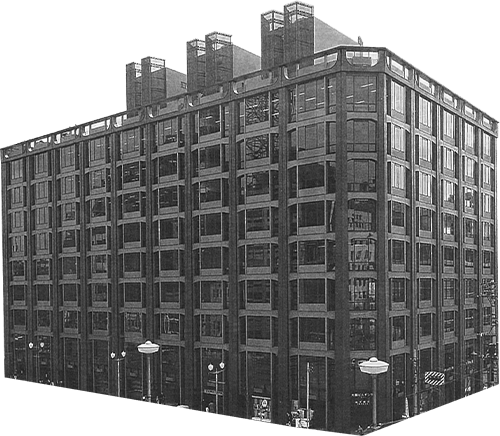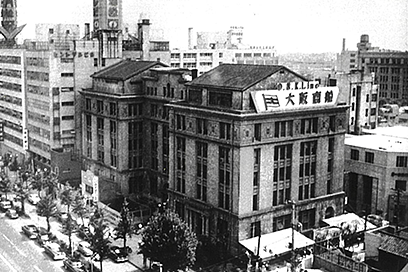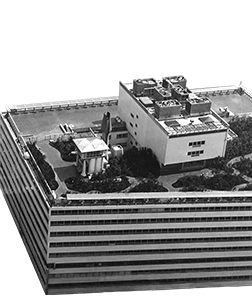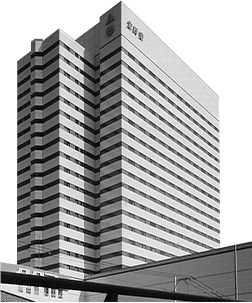 04
1967
04
1967
Tokyo
The Yaesu Daibiru Building
A Bold Project
That Leverages Its Location
as an Urban Gateway
Japan's Best Talent for Japan's Best Location
Daibiru planned for its second full-scale rental office building following the Hibiya Daibiru Building in Tokyo to be located at Yaesu, which is on the east side of Tokyo Station. That site is known as the gateway to the capital—a nickname whose origins go back to the Edo period. This nickname is fitting, since it was associated with Jan Joosten van Lodensteyn, a Dutch navigator who came to Japan in 1600 and served as an interpreter for Shogun Tokugawa Ieyasu, and the fact that it was connected with someone from outside Japan also indicates that Edo of that era was more international than one might imagine.
In the Edo period, Yaesu referred to the area around the inner moat of Edo Castle. It attracted attention only after Tokyo Station was built on the west side during the Meiji period. Although it was burnt to the ground by air raids at the end of World War II, the Yaesuguchi Station building (the Tetsudo Kaikan Building) was completed in 1954 after the war, and the large Yaesu underground shopping mall was constructed in stages during the late 1960s to attract visitors.
Daibiru’s decision to expand to Yaesu was based on its acquisition of the O.S.K. Lines Building site in Kyobashi, Chuo-ku, Tokyo. The land was apparently owned by Kokusai Kisen, which had merged with O.S.K. Lines in 1943, and the decision was made in consideration of the area’s future as the gateway of the capital and a place that attracted a lot of people. That’s why Daibiru was so interested in Yaesu. During the groundbreaking ceremony on January 8, 1965, President Tomoe Kudo delivered the following enthusiastic message: “I am very pleased to have Japan’s best architectural firm, Murano & Mori Architects, design the building, and Japan’s best construction company, Kajima Corporation, construct this building in Japan’s best location, Yaesuguchi.” Daibiru’s goal was to have an office building that lived up to the area’s status as the gateway of the capital by taking advantage of the benefits of the Yaesu location. Togo Murano, who had designed the Shin-Daibiru Building, was also commissioned to design this one.
-
1927 1931 Hibiya Daibiru Buildings
No. 1 and No. 2 -
2007 International Operations
-
- An Unexpected Discovery of a Good Property
- Mutual Trust and a Long-Term Perspective as Points of Agreement
- The Acquisition of a Property in Hanoi Through Unity of Philosophy
- Implementing Daibiru Quality Through Building Renovations
- Challenges in Australia, Our Second Overseas Expansion Target
- The Discovery of 275 George Street
- Difficult Contract Negotiations with JHG
- Overcoming Several Unexpected Difficulties
-




